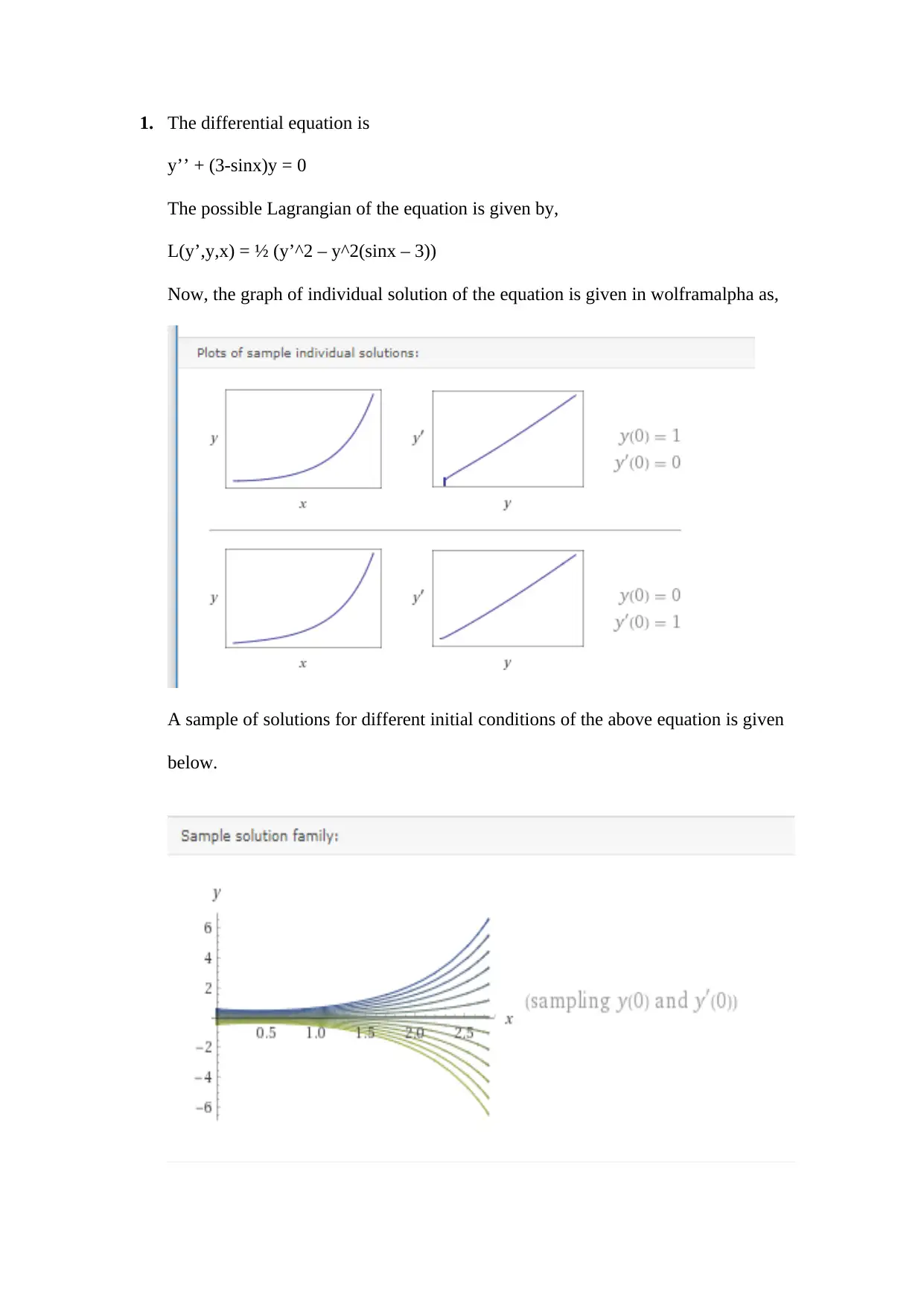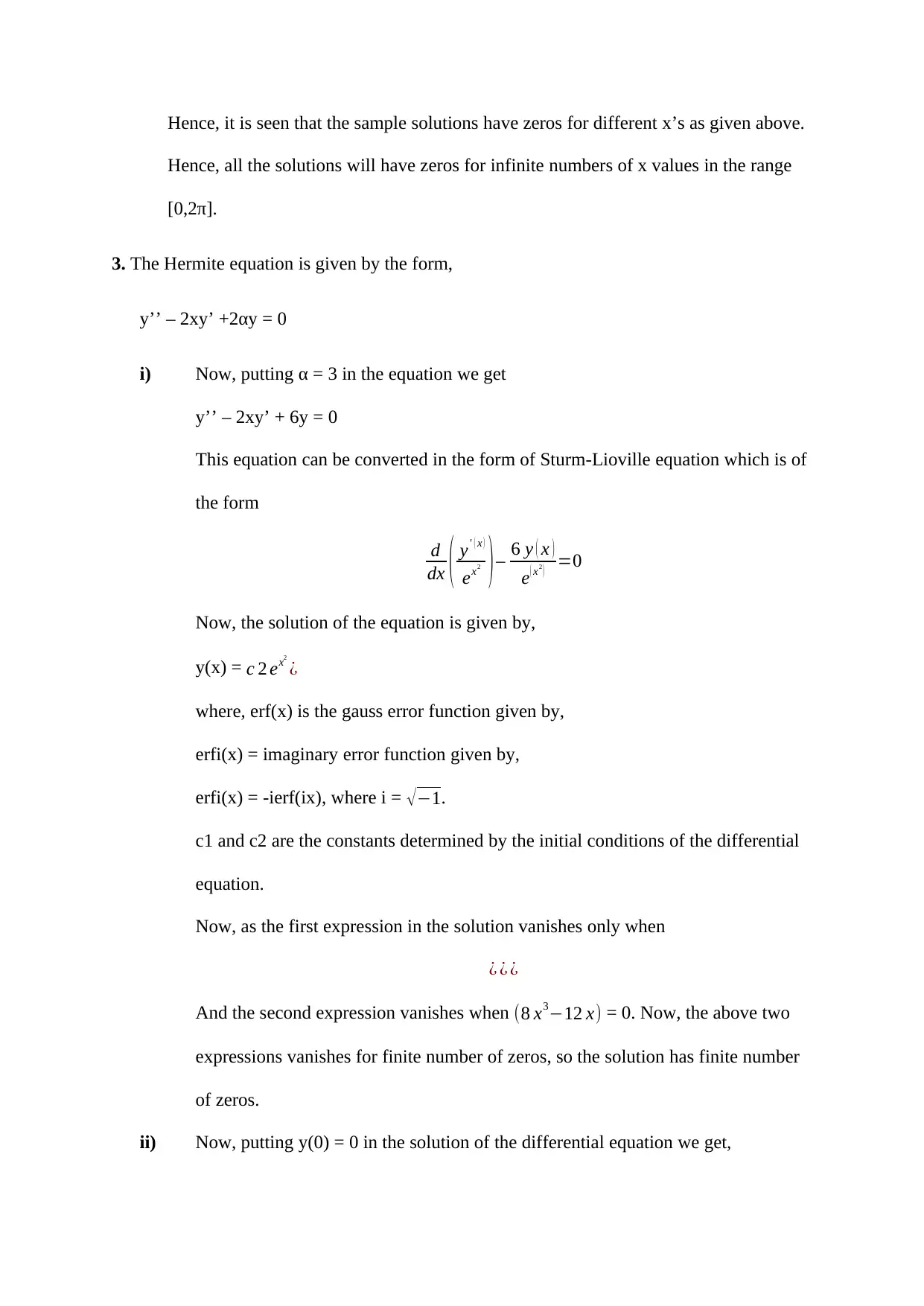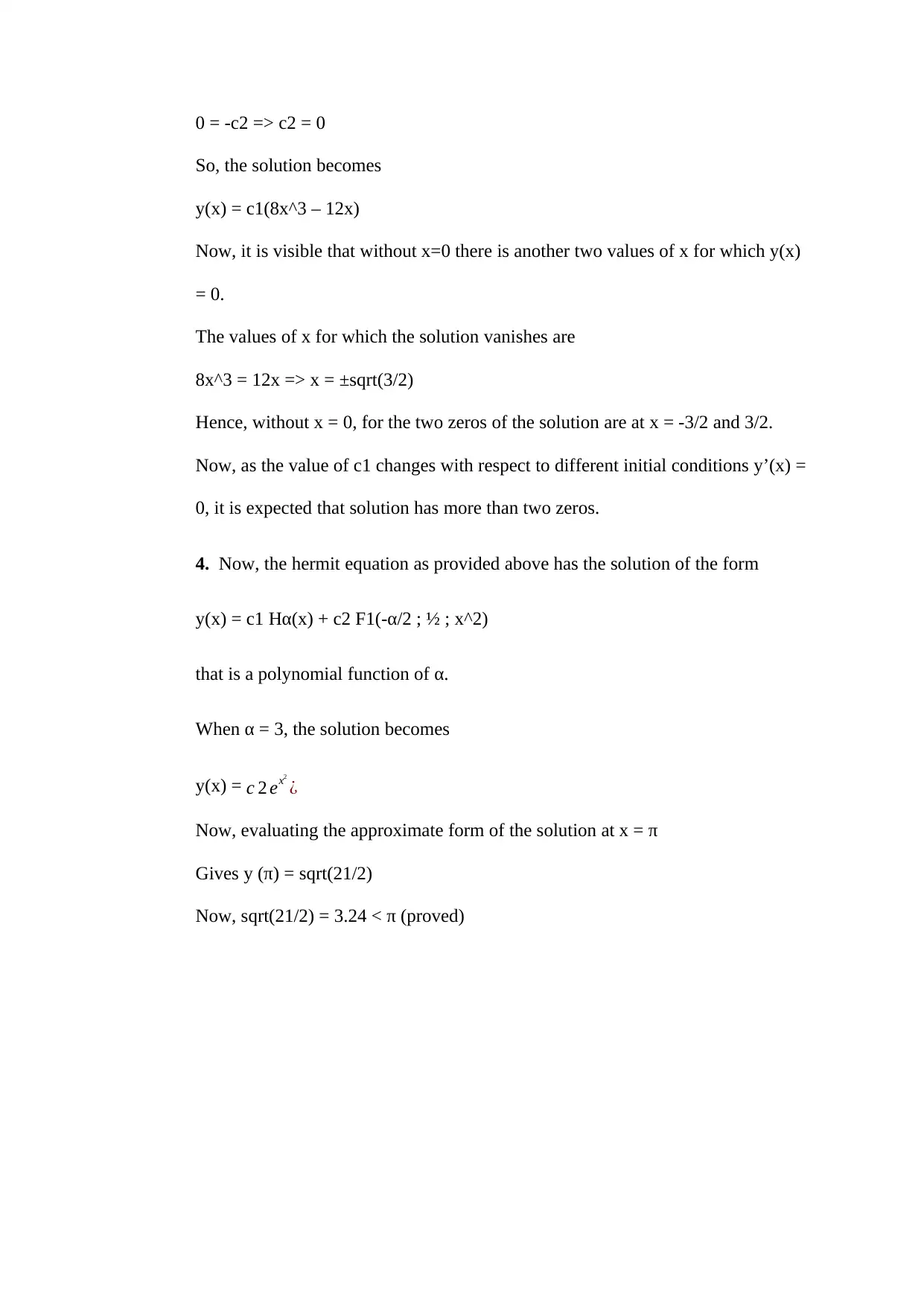Analysis of Differential Equations in Physics Assignment Solution
VerifiedAdded on 2023/06/06
|4
|577
|312
Homework Assignment
AI Summary
This document provides a detailed solution to a physics assignment focusing on differential equations. The solution explores the properties of solutions to these equations, including the number of zeros and the impact of initial conditions. It examines the Hermite equation, providing solutions and analyzing the behavior of the solutions under different conditions. The assignment also involves the use of Sturm-Liouville equations, and the Gauss error function, and polynomial functions. The solution includes a step-by-step breakdown of the problem-solving process and the application of relevant concepts. The analysis involves the use of specific values and the evaluation of the approximate form of the solution at a specific point. The solution also discusses how initial conditions affect the solution of the differential equation.
1 out of 4










![[object Object]](/_next/static/media/star-bottom.7253800d.svg)